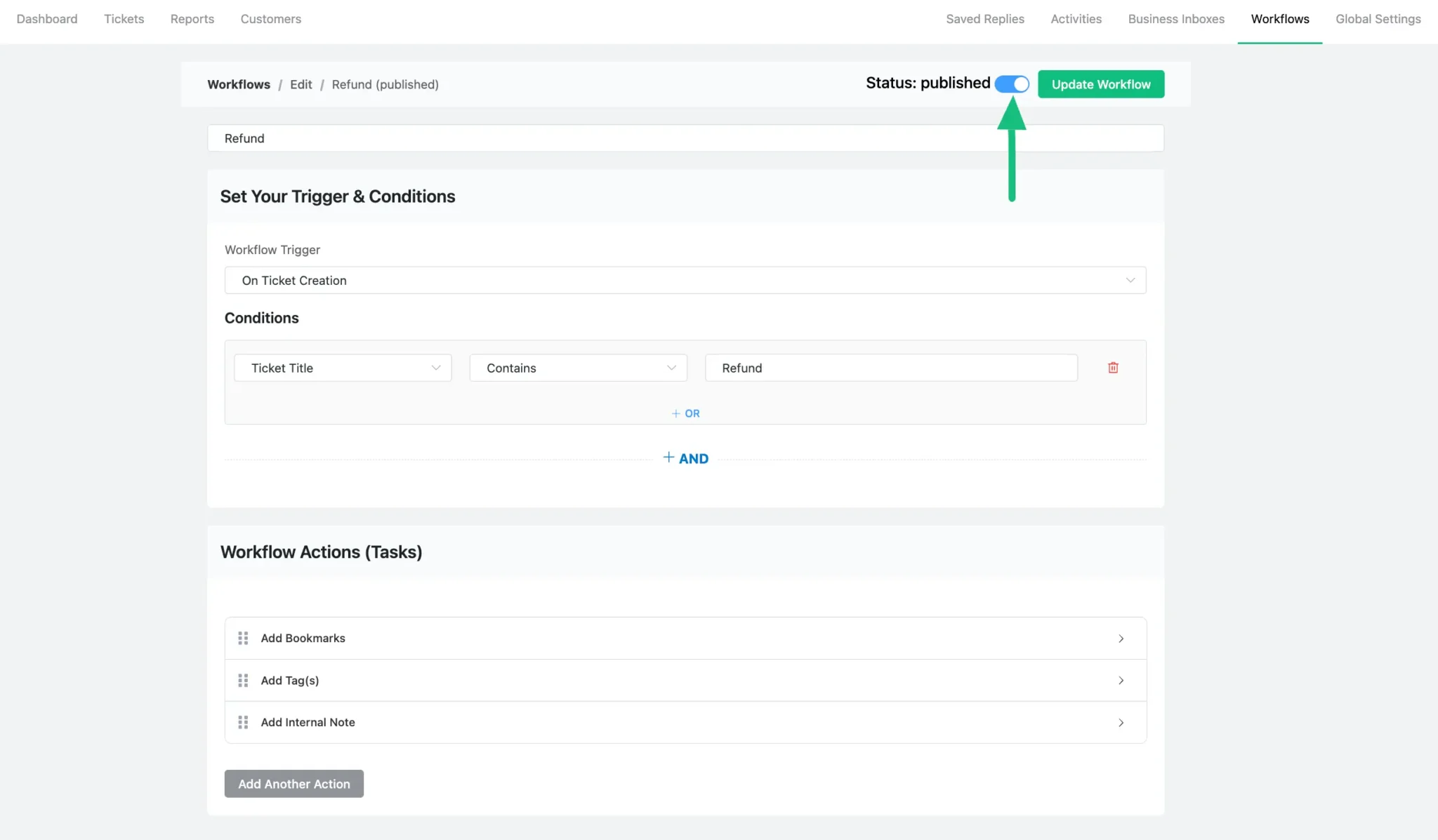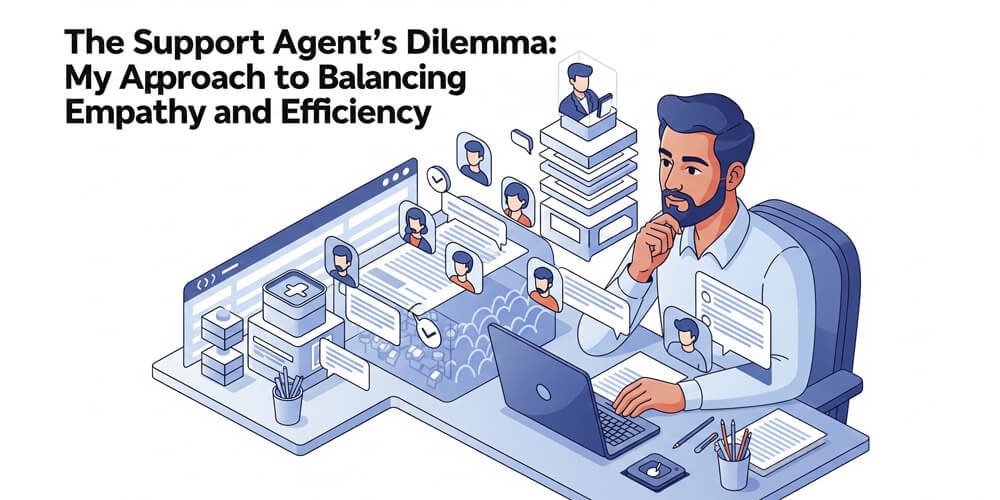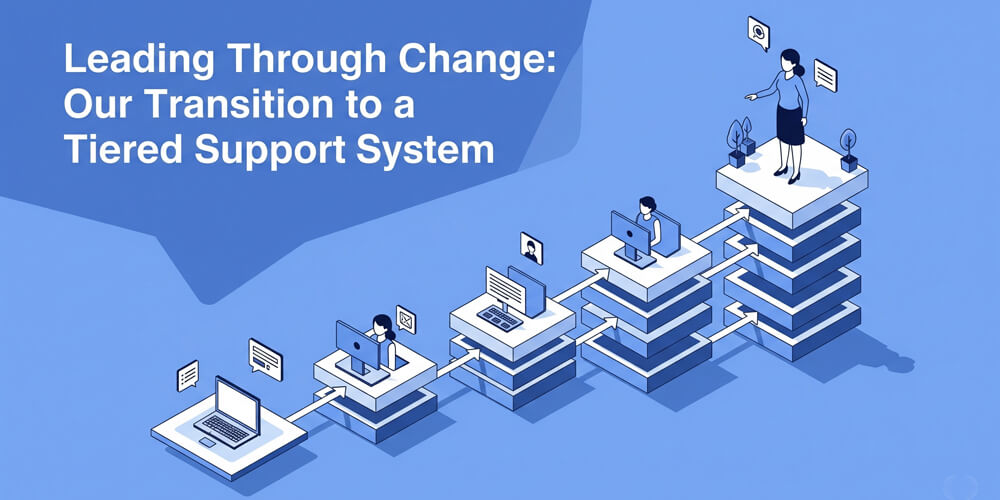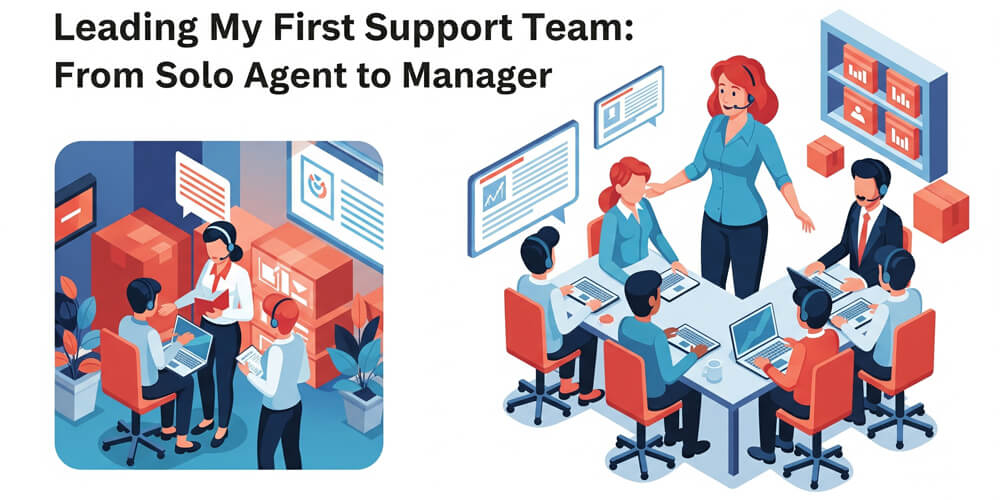Imagine stepping into the nerve center of a bustling WordPress support team at the height of Black Friday. Notifications ping relentlessly, tickets pile up by the minute, and every message carries the urgency of a business on the brink. In these moments, the difference between a frazzled user and a loyal advocate often comes down to how well support agents can balance two seemingly opposing forces: empathy and efficiency.
Balancing empathy and efficiency is the secret to world-class WordPress support. Users want fast answers, but they also crave understanding and reassurance. By building systems that streamline repetitive tasks and prioritize urgent issues, support teams can deliver both speed and genuine care. This approach not only improves customer satisfaction and retention but also boosts SEO through positive reviews and organic referrals. In a crowded plugin and SaaS market, empathy-driven efficiency is a true differentiator.
Picture the support queue as a busy airport during a raging storm. Every plane (ticket) circles overhead, desperate to land, while anxious passengers (users) await news. Only a skilled air traffic controller—calm, systematic, and attentive—can keep the chaos at bay, ensuring every “flight” lands safely. The best support agents, like great controllers, rely on robust systems and steady focus to guide each user to a smooth resolution—balancing speed with care, and never losing sight of the people on board.
In this post, I’ll take you behind the scenes of my experience leading a WordPress support team through the most intense peak hours. You’ll learn how we transformed overwhelming chaos into moments of connection and trust—proving that empathy and efficiency aren’t rivals, but powerful partners in delivering unforgettable support.
Table of Contents
Open Table of Contents
The Storm of Peak Hours
Picture this: it’s Black Friday, and the support portal is buzzing like a beehive. Tickets flood in—site crashes, plugin conflicts, frantic users losing sales. As a Product Support Lead at WPManageNinja, I’ve faced these storms many times, supporting plugins like FluentCRM and FluentSMTP. The pressure to resolve issues fast is intense, but so is the need to show users they’re more than just a ticket number. Early on, I thought I had to choose between speed and care.
Spoiler: I was wrong.
There’s a feeling every support professional knows intimately: the “peak hour” rush. The ticket count climbs, notifications fire nonstop, and you feel the weight of dozens of people waiting for your help. The instinct is to go faster—to treat the queue like an assembly line: answer, close, repeat. But behind every ticket is a person, often frustrated, confused, or stressed. Move too fast, and you risk treating them like a number, sacrificing the human connection that is the foundation of great support.
After handling over 5,000 support tickets in my career at WPManageNinja, I’ve learned that the real challenge is not choosing between empathy and efficiency, but blending them—moving quickly without making people feel rushed, and delivering solutions while still making users feel heard. In this post, I’ll share how my team and I learned to strike that balance, turning chaotic peak hours into moments of connection and resolution.
The Myth of Choosing Sides
When I started in support, I saw empathy and efficiency as opposites. Efficiency meant clearing the queue quickly, often with curt replies, while empathy meant long, heartfelt responses that ate up time. This mindset led to burnout and frustrated users. Over time, I realized this was a false choice. Efficiency isn’t just about speed—it’s about working smarter to free up space for empathy. A quick, thoughtful reply can be as caring as a lengthy one if it shows you’ve listened. The real solution is not to sacrifice one for the other, but to build a system where efficiency “creates the space and time” for empathy to thrive.
With this new perspective, I began to focus on designing workflows and tools that allowed my team to move quickly without losing the human touch. This shift transformed not only our support metrics, but also the quality of our user relationships.
Early Days of Chaos
In the early days, peak hours felt like a free-for-all. Tickets piled up faster than we could read them, and our team scrambled to respond, often feeling like we were bailing water from a sinking ship. I vividly remember one Black Friday when the queue ballooned to over 300 tickets—each one a potential crisis for a user on the other end. Our average response times soared to 45 minutes, and the tension in our Discord channels was palpable. Users were frustrated, sometimes sending follow-ups before we could even reply to their first message, and our team was stretched to the breaking point.
During a new product launch, things got even more intense. We faced a 200-ticket surge in just two hours. Agents were exhausted, eyes glued to their screens, fingers flying across keyboards. The Support Portal was only part of the chaos—our Live Chat was also flooded with urgent questions, many from users who were losing sales by the minute. We weren’t just busy; we were firefighting, reacting to problems as they exploded rather than proactively supporting our users. It became clear that our current approach wasn’t sustainable. I knew we needed a better way—a system, not just more effort.
The start of each week brought its own unique challenges. Mondays felt like a collective hangover from the weekend, with users returning to work and discovering issues that had accumulated while they were away. The ticket count would spike, and the pressure to catch up was immense. Even midweek, especially on Wednesdays, we’d see another surge as users caught up on tasks and ran into new problems. It was a relentless rollercoaster of stress and urgency, and I felt the weight of it deeply—not just as a team lead, but as someone who genuinely cared about each user’s experience.
One recurring pain point was the back-and-forth over staging website credentials. Some tickets required us to investigate issues directly, but often the credentials provided were incorrect or expired. This meant we had to ask users for updated access, leading to frustrating delays on both sides. Each round of clarification added hours—or even days—to the resolution time. I realized that we needed to streamline this process, perhaps by creating a clear checklist for users to provide the right information up front, or by integrating secure credential sharing tools into our workflow. Investigation tickets, in particular, could drag on, leaving users waiting anxiously and sometimes prompting them to open repeat tickets out of desperation. These inefficiencies were costing us valuable time and eroding user trust.
I remember one particularly hectic day when a new plugin update caused widespread issues across hundreds of sites. Our inbox was inundated with tickets, each one tinged with urgency and, sometimes, panic. I could feel the collective anxiety of our users, and it weighed on me. That day was a turning point—a wake-up call that we couldn’t keep operating in reactive mode. We needed to anticipate problems, communicate proactively, and build systems that could withstand the pressure of peak hours.
Another lesson came from a personal misstep. I once assured a customer that I would provide an update within the day, confident that I could resolve their issue quickly. But as the hours slipped by and new fires demanded my attention, I missed my own deadline. It ended up taking several days to get back to the user, who was understandably frustrated by the delay. That experience stung, but it taught me a crucial lesson: always set realistic expectations, and communicate clearly—even if the news isn’t what the user wants to hear. Overpromising and underdelivering erodes trust far faster than a slower, but honest, update ever could.
These early challenges shaped my approach to support. They taught me that chaos is inevitable during peak hours, but with the right systems, clear communication, and a focus on both empathy and efficiency, it’s possible to turn even the most overwhelming situations into opportunities for connection and trust-building.
Our Systematic Approach
To handle peak hours, we developed a system that combines precision, technology, and human insight. Here’s how it works:
a. Prioritize Like a Pro
We use a tag-based system to sort tickets by urgency:
- Urgent: Site downtime or critical issues, like a broken checkout.
- High Priority: Major feature bugs affecting users.
- Medium Priority: Minor glitches or feature requests.
- Low Priority: How-to questions or documentation needs.
This ensures we tackle the biggest problems first. For example, during a plugin update rush, we spotted an “Urgent” ticket about a site crash and fixed it in 20 minutes, saving the user’s sales.
b. Embrace Smart Automation
Automation saves time without losing the human touch. We use pre-written responses for common questions, like “How do I set up FluentCRM automations?” These link to our documentation, freeing agents for tougher tickets. Chatbots handle initial triage, guiding users to self-help resources or escalating to us when needed.
We use Fluent Support, our in-house helpdesk plugin, to automate routine tasks like ticket assignment and status updates. This lets us focus on complex issues while ensuring users get timely responses. For instance, when a user asks about a feature, our bot can provide a quick answer or direct them to the relevant documentation, reducing the need for back-and-forth emails. Here is an example of how we set up automation rules in Fluent Support:

You may checkout the relevant guide to learn more about this: Automatic Workflow
c. The Five-Minute Rule (and Beyond)
Before replying, we spend five minutes—or as long as needed—reading the ticket, grasping the user’s issue, and sensing their emotions. This prevents rushed, off-target responses. Once, a user reported a “broken” feature, but five minutes showed they’d misconfigured it. Our reply fixed the issue and included a quick tip, earning a thank-you note.
But the Five-Minute Rule is more than just a pause; it’s a mindset. We use this time to:
- Identify the root cause: Is it a technical bug, user error, or a misunderstanding?
- Spot emotional cues: Is the user frustrated, anxious, or just confused?
- Check for context: Has this user contacted us before? Are there related tickets?
- Anticipate follow-up questions: Can we preemptively answer what they’ll ask next?
This approach transforms support from reactive to proactive, reducing back-and-forth and building trust from the very first reply.
d. First Reply, Then Resolve
We distinguish between the first reply and the final fix. The first reply acknowledges the issue and sets expectations, like: “I see your emails aren’t sending. I’m on it and will update you soon.” This builds trust while we dig deeper. It’s empathy in action, even under pressure.
Our framework for the first reply:
- Acknowledge: Show you’ve read and understood the issue.
- Empathize: Recognize the user’s frustration or urgency.
- Set expectations: Give a realistic timeline for updates or resolution.
- Reassure: Let them know their issue is a priority.
Example:
Hi [User],
Thank you for reaching out. I understand how stressful it is when emails aren’t sending, especially during a busy campaign.
I’m investigating this now and will update you within the next hour.
Thanks for your patience and cooperation!The Empathy-Efficiency Flywheel
Empathy and efficiency aren’t just compatible—they fuel each other in a virtuous cycle that elevates both the user experience and team performance. When users feel genuinely heard and understood, they’re more likely to provide clear, relevant information, which in turn accelerates troubleshooting and resolution. Fast, accurate solutions build trust, and that trust encourages users to be more patient, cooperative, and understanding in future interactions. Over time, this creates a positive feedback loop—a flywheel—where each empathetic, efficient support interaction makes the next one smoother and more effective.
Let’s break down how this flywheel works in practice:
- Empathy at the Start: Begin every interaction by acknowledging the user’s feelings and situation. For example, if a user is frustrated about a site outage, a simple “I understand how stressful this must be for you, especially during a busy sales period” can immediately defuse tension and open the door to productive dialogue.
- Clarity Breeds Speed: When users feel listened to, they’re more likely to share detailed, accurate information—screenshots, error logs, or step-by-step descriptions. This clarity helps agents diagnose issues faster, reducing the need for endless back-and-forth.
- Efficiency Builds Trust: Quick, effective solutions show users that their concerns are taken seriously. When you resolve a critical issue promptly, users remember the experience and are more likely to approach future problems with patience and trust.
- Trust Enables Deeper Engagement: As trust grows, users become more open to feedback, proactive advice, and even upsell opportunities. They’re also more likely to leave positive reviews, recommend your product, and participate in user communities.
- Continuous Improvement: Each positive interaction provides valuable feedback. Use this to refine your processes, update documentation, and improve automation—making the next round of support even better.
How to build your own flywheel:
- Start every ticket with empathy—acknowledge the user’s emotions and situation.
- Use automation to handle routine tasks, freeing up time for meaningful conversations.
- Invest the time you save into deeper user engagement: offer proactive tips, follow up after resolution, or personalize your responses.
- Gather feedback after each interaction and use it to refine your support processes, documentation, and automation rules.
Example in Action:
A user submits a ticket about a failed payment integration during a product launch. Instead of sending a generic reply, you empathize with their urgency, quickly triage the issue using automation to pull up their account details, and provide a tailored solution. The user feels supported, the issue is resolved swiftly, and they respond with gratitude—leaving a positive review and becoming an advocate for your brand. The next time they need help, they’re more likely to provide all the necessary details up front, making your job even easier.
By intentionally nurturing this empathy-efficiency flywheel, you transform support from a cost center into a strategic advantage—one that delights users, empowers your team, and drives long-term growth.
Building a Culture of Continuous Improvement
- Retrospectives: After peak periods, hold team debriefs to discuss what worked and what didn’t. Encourage open, blame-free conversations where everyone can share lessons learned and suggest improvements. For example, after a major product launch, our team gathers to review ticket trends, identify bottlenecks, and brainstorm ways to streamline workflows for next time.
- Celebrate Wins: Share stories of empathy-driven success in team meetings and internal channels. Recognize agents who went above and beyond, whether by calming a frustrated user or resolving a complex issue quickly. This not only boosts morale but also sets a standard for what great support looks like.
- Iterate: Regularly update playbooks, canned responses, and automation rules based on real-world feedback. If a particular macro or workflow is saving time, document it and share with the team. If users are repeatedly confused by a feature, update your documentation or suggest product improvements.
- Encourage Experimentation: Give team members the freedom to try new approaches—whether it’s a different way of phrasing replies, a new automation rule, or a tweak to the ticket triage process. Treat these as experiments, review the results, and adopt what works.
- Solicit User Feedback: After resolving tickets, ask users for feedback on their experience. Use surveys or simple follow-up questions to gather insights, then review this feedback as a team to spot trends and areas for growth.
- Invest in Training: Schedule regular training sessions on both technical topics and soft skills like communication, empathy, and conflict resolution. Invite team members to share their own tips and tricks, or bring in outside experts for fresh perspectives.
- Document and Share Learnings: Maintain an internal knowledge base where the team can log tricky cases, solutions, and best practices. This living resource helps onboard new agents faster and ensures hard-won lessons aren’t lost.
- Set Improvement Goals: Choose one or two focus areas each month—such as reducing first response time or increasing user satisfaction scores—and track progress. Celebrate milestones and adjust tactics as needed.
By embedding these habits into your team’s DNA, you create an environment where learning and growth are continuous, not occasional. Over time, this culture of improvement leads to happier users, a more resilient team, and support operations that get better with every challenge.
Final Thoughts
Balancing empathy and efficiency is a journey, not a destination. Start by picking one tactic from this post—maybe the Five-Minute Rule, or building your first playbook—and try it this week. Share your results, iterate, and keep learning. The best support teams aren’t just fast or kind—they’re both, and that’s what makes them unforgettable.
Key Takeaways:
- Empathy and efficiency are not mutually exclusive—when combined, they create exceptional support experiences.
- Systematic prioritization, smart automation, and clear communication are essential during peak hours.
- Continuous improvement and team learning turn challenges into opportunities for growth.
- Small, consistent changes—like the Five-Minute Rule—can have a big impact over time.
By embracing both empathy and efficiency, you can transform high-pressure support moments into opportunities to build trust, loyalty, and lasting user relationships. The journey is ongoing, but every step forward makes your team—and your users—stronger.




